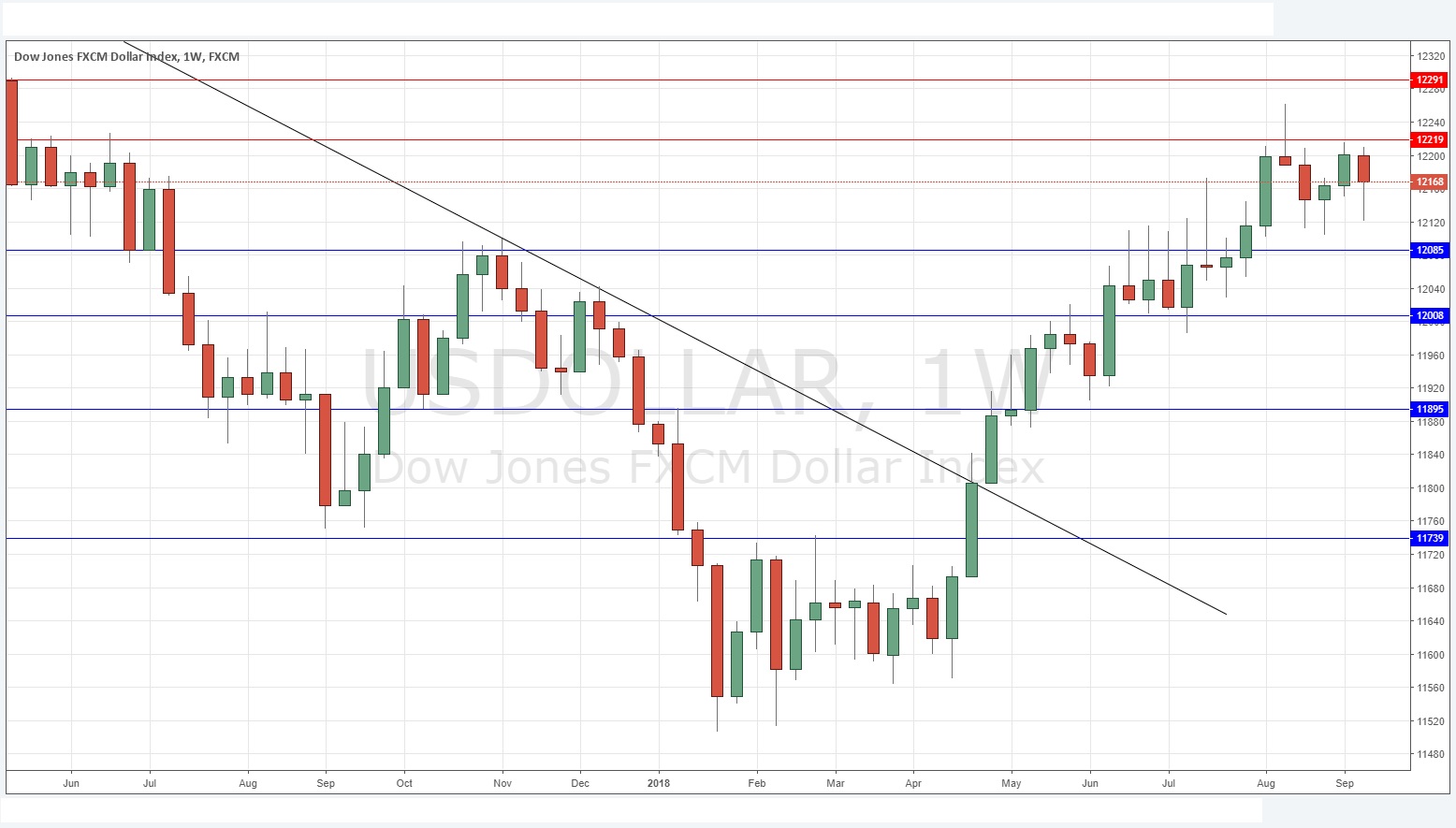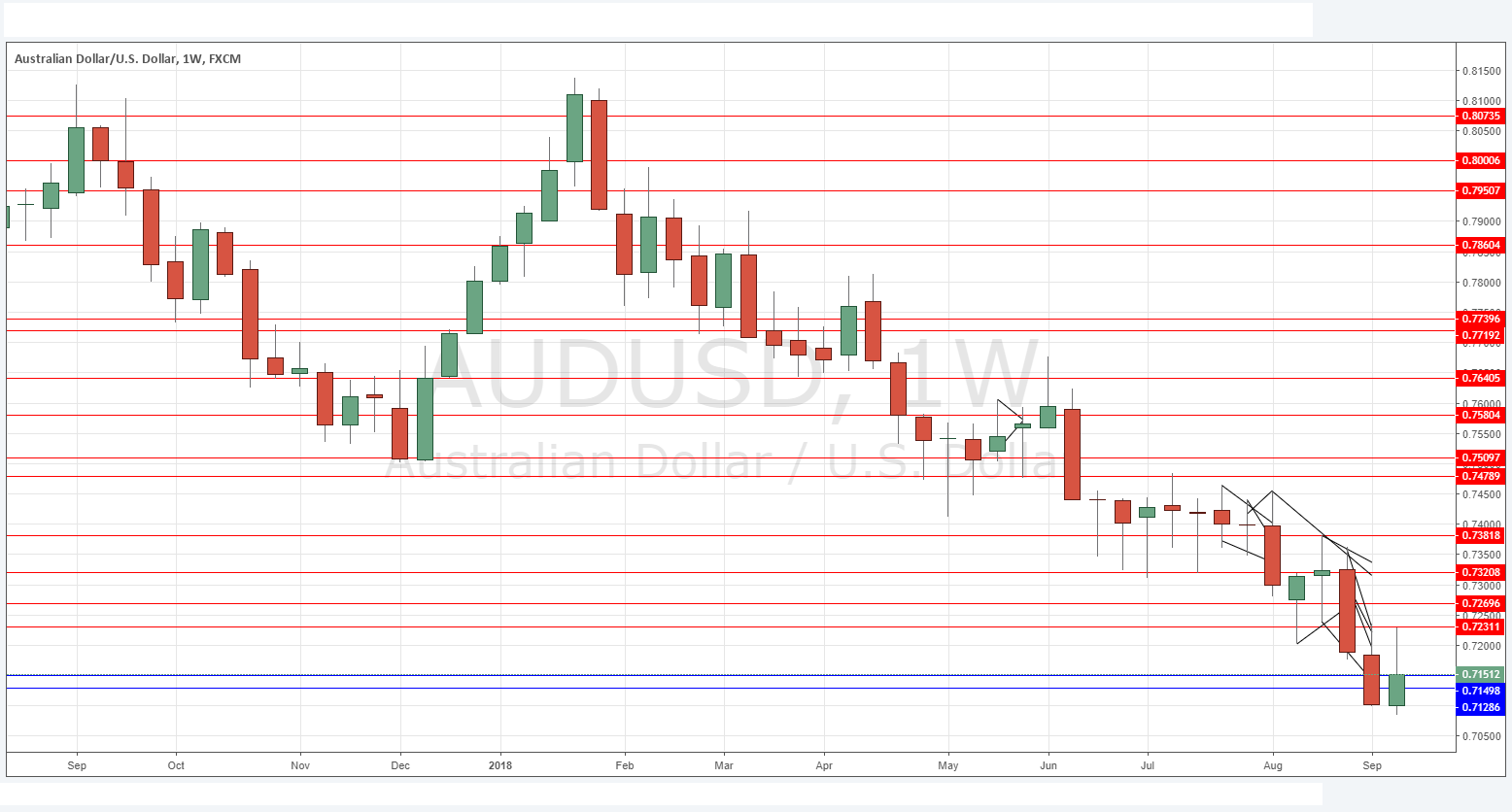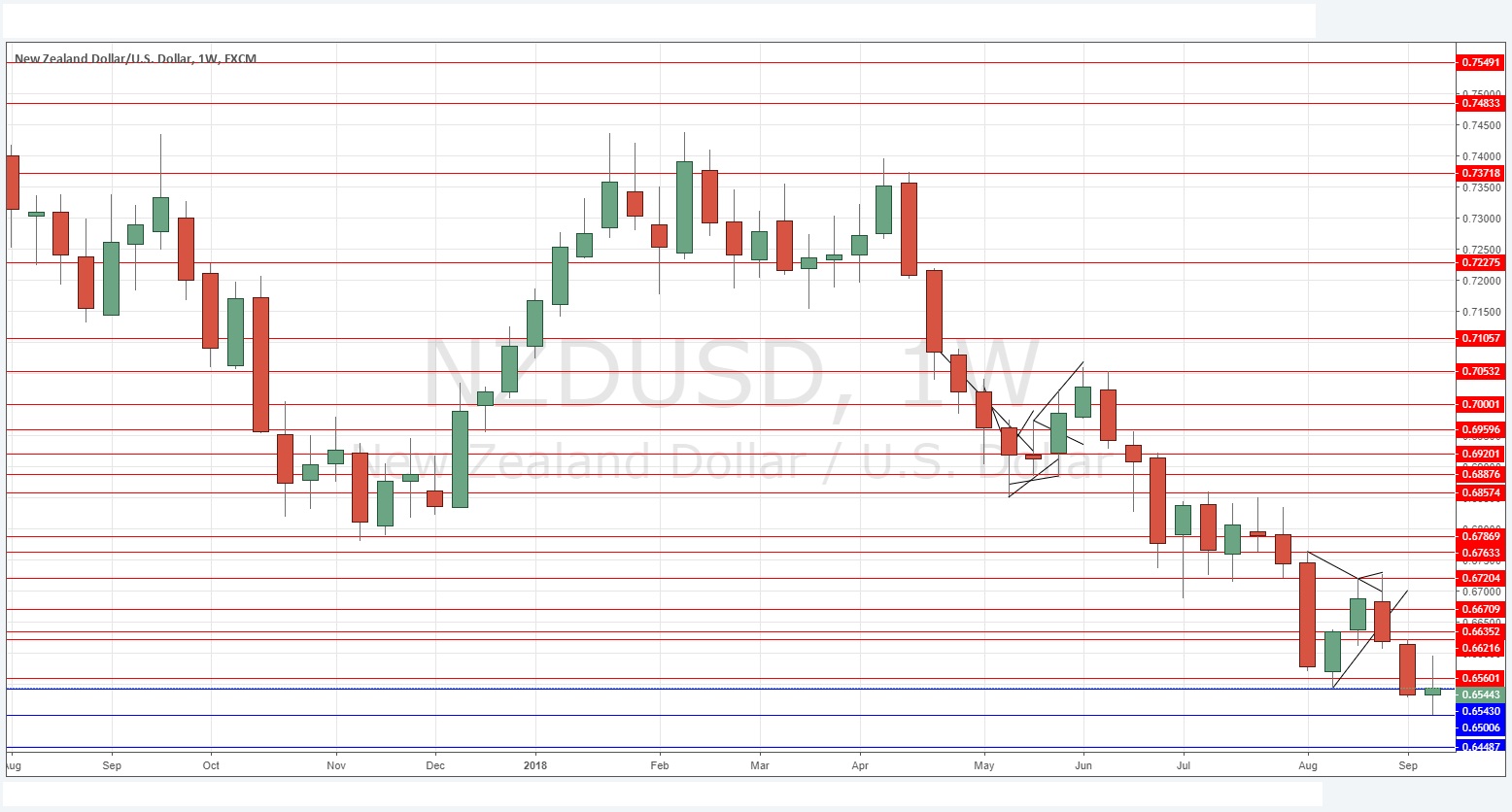The difference between success and failure in Forex trading is very likely to depend upon which currency pairs you choose to trade each week, and not on the exact trading methods you might use to determine trade entries and exits. Each week I am going to analyze fundamentals, sentiment and technical positions in order to determine which currency pairs are most likely to produce the easiest and most profitable trading opportunities over the next week. In some cases it will be trading the trend. In other cases it will be trading support and resistance levels during more ranging markets.
Big Picture 16th September 2018
In my previous piece last week, I forecasted that the best trade would be short AUD/USD. This trade finished negatively: the AUD/USD currency pair rose by 0.69% over the past week.
Last week saw a rise in the relative value of the Canadian Dollar, and a fall in the relative value of the Japanese Yen.
Last week’s Forex market was dominated by somewhat weaker data and sentiment on the U.S. Dollar, but overall markets have been relatively quiet, with low volatility and little strong movement.
Fundamental Analysis & Market Sentiment
Fundamental analysis tends to support the U.S. Dollar, as American economic fundamentals continue to look relatively strong. Sentiment has turned against the Dollar a little though, as inflation and PPI data both came in below consensus expectations.
The week ahead is likely to be dominated by central bank input concerning the Japanese Yen, Australian Dollar, and Swiss Franc, as well as some crucial British and Canadian economic data releases. It will be a notably quiet week concerning the U.S. Dollar with very little scheduled, meaning it is likely to be another quiet week in the Forex market.
Technical Analysis
U.S. Dollar Index
The weekly price chart below shows that after last week’s bullish candlestick, the price has produced a pin candlestick but a relatively bearish one, still below the resistance level at 12219. The Index is clearly in a long-term bullish trend but seems to be entering a period of consolidation. This still suggests that the outlook for the U.S. Dollar is bullish, but there is obviously reason for caution, as the price is not breaking the resistance level at. As there is very little important Dollar data due, it looks likely that we will see another week of consolidation.
AUD/USD
This pair is in a strong long-term downwards trend and has been falling steadily over the past six months. Along with the New Zealand Dollar, it has shown the greatest long-term weakness of any major currency. Although last week’s candlestick closed up, it rose by little and had a long upper wick, which is a bearish sign. It also made a multi-year low price last week. The major note of caution lies in the fact the price is approaching a major psychological level at 0.7000.
NZD/USD
This pair is in a strong long-term downwards trend and has been falling steadily over the past five months. Along with the Australian Dollar, it has shown the greatest long-term weakness of any major currency. Although last week’s candlestick closed up, it rose by very little and had a large upper wick, which is a bearish sign. It also made a multi-year low price last week.
Conclusion
Bearish on the AUD/USD and NZD/USD currency pairs.




